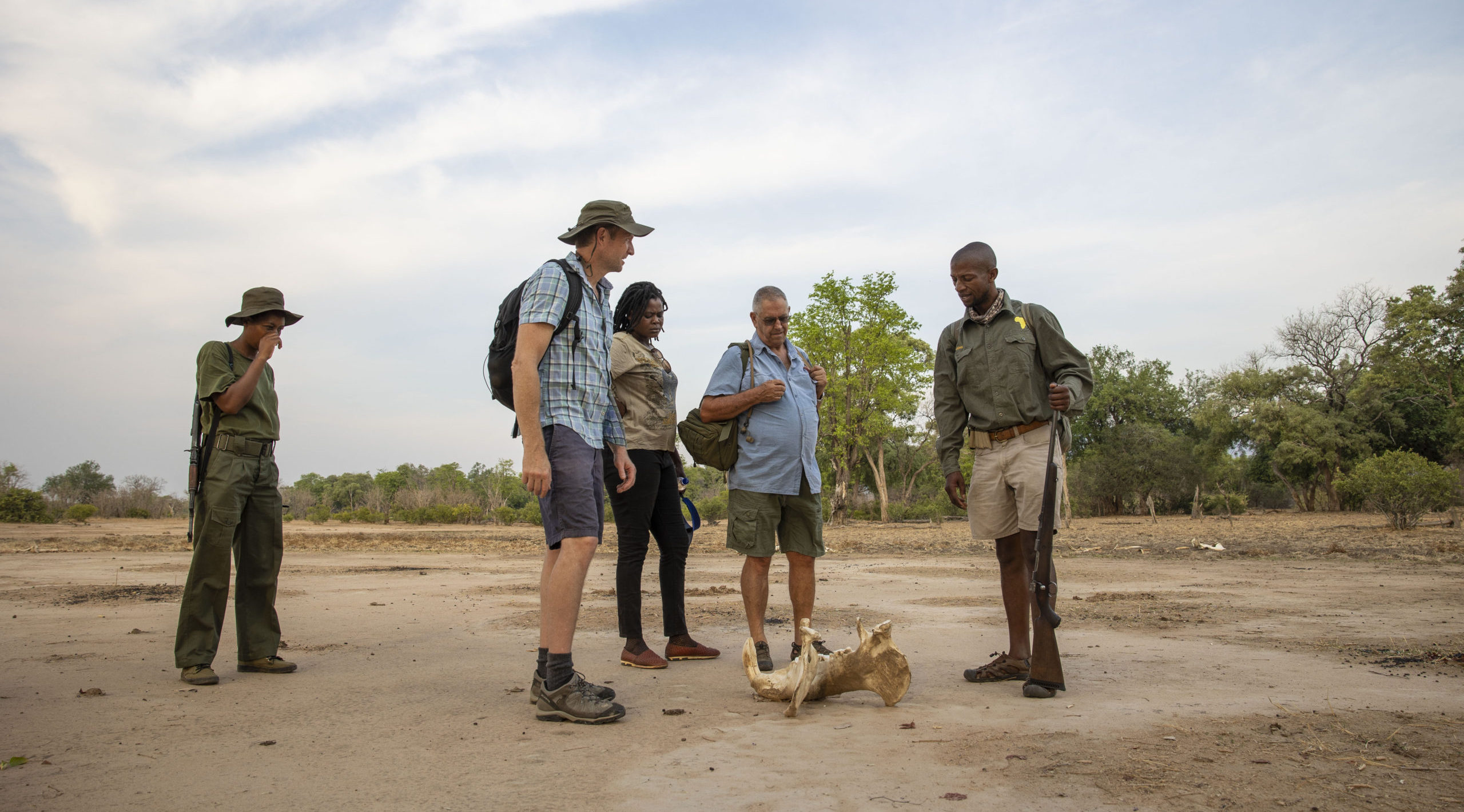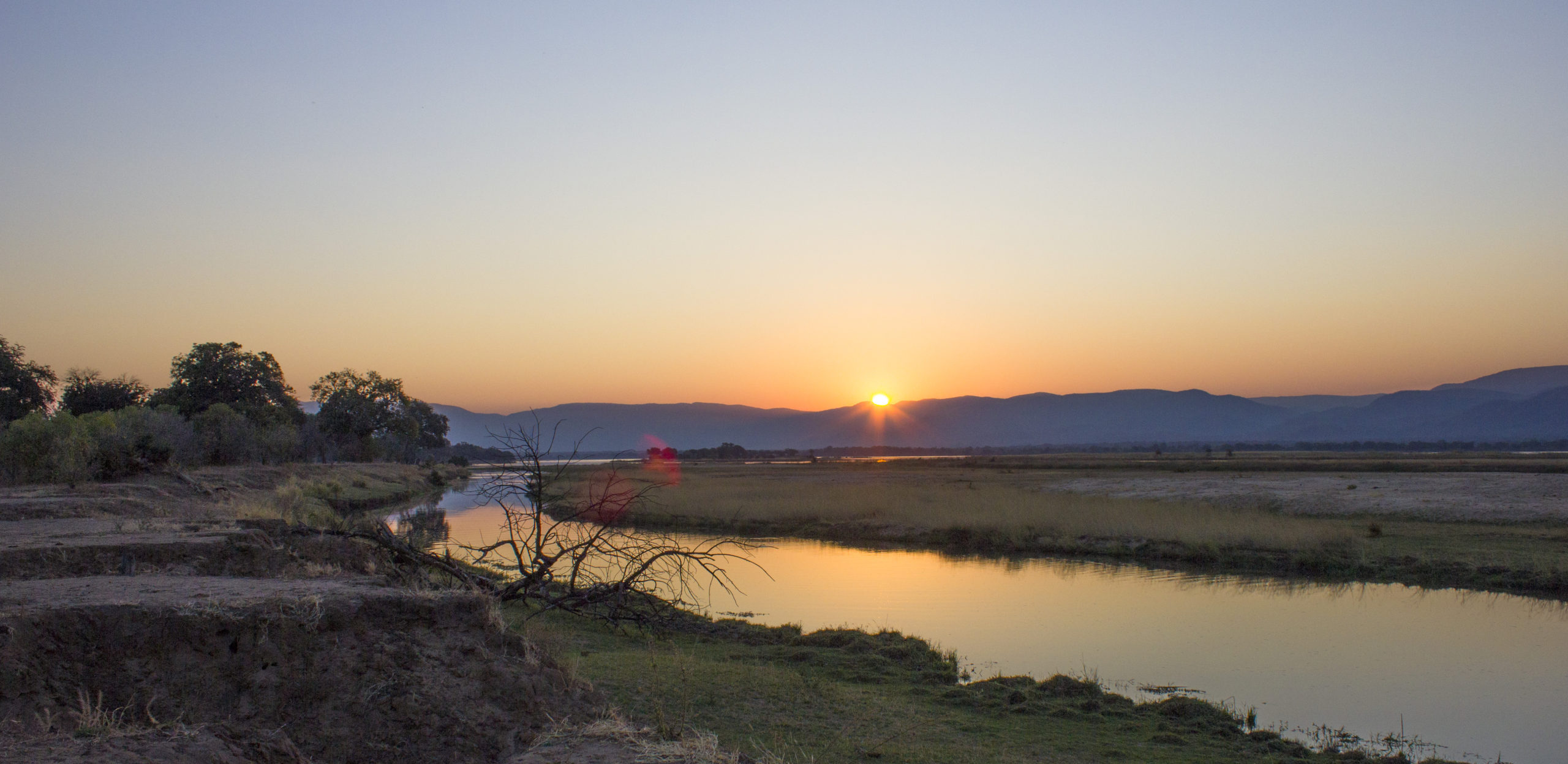In the Zambezi Valley, a community of conservation entities are uniting and harnessing their collective influence to ensure the optimal protection of one of the World’s most unique and pristine wilderness areas – its vulnerable ecosystems, wildlife and their habitats.

The Zambezi Network inaugural launch walk in November 2020, brought together Network members from diverse industries to have a shared experience in the Zambezi landscape.
The Zambezi Valley is an iconic, world class wilderness area of global biological significance, which features an incredible array of wildlife, dramatic floodplains and miombo woodland and the continents fourth-largest river, the might Zambezi. However, the last 20 years have seen a degradation of the Zambezi’s scenic and wildlife assets, specifically in areas which were once sustained by tourism businesses and investments. Vast stretches of protected wilderness are now vulnerable to land use conflict and threats such as illegal mining, poaching, the illegal wildlife trade, deforestation and habitat loss.
In July 2020, the Zambezi Valley Conservation Network was launched in Zimbabwe. Initiated by a community of passionate conservationists and driven by the Zambezi Elephant Fund, the Zambezi Network is a new framework that coordinates and harnesses collective action to enhance conservation efficiencies across the key needs of the Zambezi Valley and address the most urgent landscape-wide threats. The network is united by a common vision, which is to preserve the biodiversity and scenic values of this incredible wilderness area, while reconciling the needs of the local surrounding communities.
Leveraging strategic communications and information exchange between the many entities who contribute to conservation activity, the Zambezi Network aims to create opportunities for synergy and collaboration, reduce duplication of efforts, and find innovative, cross-cutting solutions to conservation problems in the middle Zambezi Valley. A specific focus for the Zambezi Network is the coordination of strategic responses to mitigate complex threats, which require the collective influence and resources of key conservation entities to identify, develop and implement a viable operation.
In addition to enhancing conservation efficiencies, the Zambezi Network’s goal is to map and create visibility of the incredible conservation inputs and impact which currently help to preserve this vast landscape, its wildlife and their habitats. By highlighting conservation work and contributions, the Zambezi Network aims to tell a story of successful landscape-scale conservation, while also drawing attention to major conservation gaps and threats and areas where funding from both the local and international community is most urgently needed.
Highlighting conservation activity through stories and information mapping and exchange is also key to internetwork visibility of the various projects and their impact. Conservation activity is mapped through a digital interactive map, which currently displays information and areas of conservation activity of the network members who have formally opted in to the Network. The network is currently focusing on the middle Zambezi Valley within Zimbabwe, but is working towards a transfrontier framework, engaging cross-border organisations to secure the future of conservation of both the middle and lower Zambezi Valley in Mozambique and Zambia.
The Zambezi Network aims to eventually map the conservation activity of all organisations and projects contributing in the Zambezi Valley, whether entities have signed up to the Network or not. However, for the purpose of leveraging communications and collective action, the Zambezi Network hopes that all organisations, including government authorities, will officially be a part of an extensive landscape-wide network in the near future.

The Zambezi Network aims to preserve the scenic and wildlife values of the Middle Zambezi Valley and its World Heritage Sites, such as Mana Pools.
Steering the Zambezi Network model is a distinct strategic approach, which is to identify all the conservation entities across five stakeholder groups and map their conservation contributions across eight specific key conservation areas and needs. Included in the stakeholder groups are corporate organisations, such as Tobacco companies, who have been previously excluded from the conservation narrative and solutions, however which can and do play a key role in protecting wilderness areas such as the Zambezi Valley through levy contributions and their direct CSR conservation projects. The Zambezi Network will focus on identifying and nurturing such private sector partnerships and work towards a conservation framework for the Zambezi Valley that is sustained with local funding and other ‘homegrown’ solutions.
While the Zambezi Network aims to eventually become a self-sustained initiative which is funded through local corporate social responsibility contributions and partnerships, it will also attracting international funding to the various conservation organisations and projects in the Zambezi Valley. However, an immediate goal is to garner funding by individuals and organisations who are passionate about preserving the biodiversity of wild areas such as the Zambezi Valley, and who see the value of harnessing the resources of a variety of entities to combat imminent, land-scape scale threats.
The Zambezi Network is also relying on financial contributions to raise funds for current projects including the strategic development and implementation of a sustainable response to small scale mining – an activity that is illegal, but rampant and leading to ecological damage in river beds across the protected areas. The Network is confident that through united action and improved communications across the landscape, we will be able to tell a conservation success story of the Zambezi Valley landscape; one of protection, revival and rehabilitation. Join us to protect one of Africa’s last great wildernesses.
The Zambezi Valley welcomes donors, partners and network members. Fill out this form or contact to become affiliated with the Zambezi Valley Conservation Network or stay abreast of conservation activity and impact in the Valley by signing up to our Network Newsletter.

